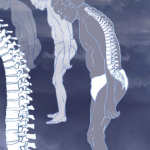Background & Objectives
Magnetic resonance imaging (MRI) is the gold standard imaging modality for the detection of sacroiliitis, a hallmark of axial spondyloarthritis (axSpA). Nonetheless, the specificity of MRI in the context of axSpA has been questioned in several studies. Using the Assessment of SpondyloArthritis International Society (ASAS) imaging definitions, a high prevalence of MRIs showing active sacroiliitis was found in a non-SpA context. These false positives occurred in postpartum women (60%), elite ice hockey players (41%), recreational runners (30–35%) and military recruits (23%). Surprisingly, extensive data on sacroiliac (SI) joint and spinal MRI of healthy individuals across different age categories are lacking.
This study was undertaken to evaluate the occurrence of MRI-detected SI joint and spinal lesions in healthy individuals in relation to age.
Methods
Ninety-five healthy subjects (ages 20–49 years) underwent MRI of the SI joints and spine. None of the subjects had symptoms of back pain. Only three subjects (3%) ever had an episode of chronic back pain. Bone marrow edema and structural lesions of the SI joints were scored using the Spondyloarthritis Research Consortium of Canada (SPARCC) method. Spinal inflammatory and structural lesions were evaluated using the SPARCC MRI spine inflammation index and the Canada-Denmark MRI scoring system, respectively. Fulfillment of the ASAS definition of a positive MRI for sacroiliitis/spondylitis was reviewed. Findings were compared with MRIs of axial SpA patients from the Belgian Inflammatory Arthritis and Spondylitis cohort.
Results
Of the subjects 30 years and older, 17.2% fulfilled the definition of a positive MRI for sacroiliitis, but this occurred rarely in younger subjects. SI joint erosions (20.0%) and fat metaplasia (13.7%) were detected across all age groups. Erosions were more frequently visualized in subjects aged 40 and older (39.3%). Spinal bone marrow edema (35.7%) and fat metaplasia (28.6%) were common in subjects older than 40 years. Nonetheless, only one subject had ≥3 corner inflammatory lesions. SI joint and spinal SPARCC scores and total structural lesions scores increased progressively with age.
Conclusion
Contrary to what is commonly believed, structural MRI-detected SI joint lesions are frequently seen in healthy individuals. Especially in older subjects, the high occurrence of inflammatory and structural MRI-detected lesions affects their specificity for SpA, which has important implications for the interpretation of MRIs in patients with a clinical suspicion of SpA.
For full study details, including source material, refer to the full article.
Excerpted and adapted from:
